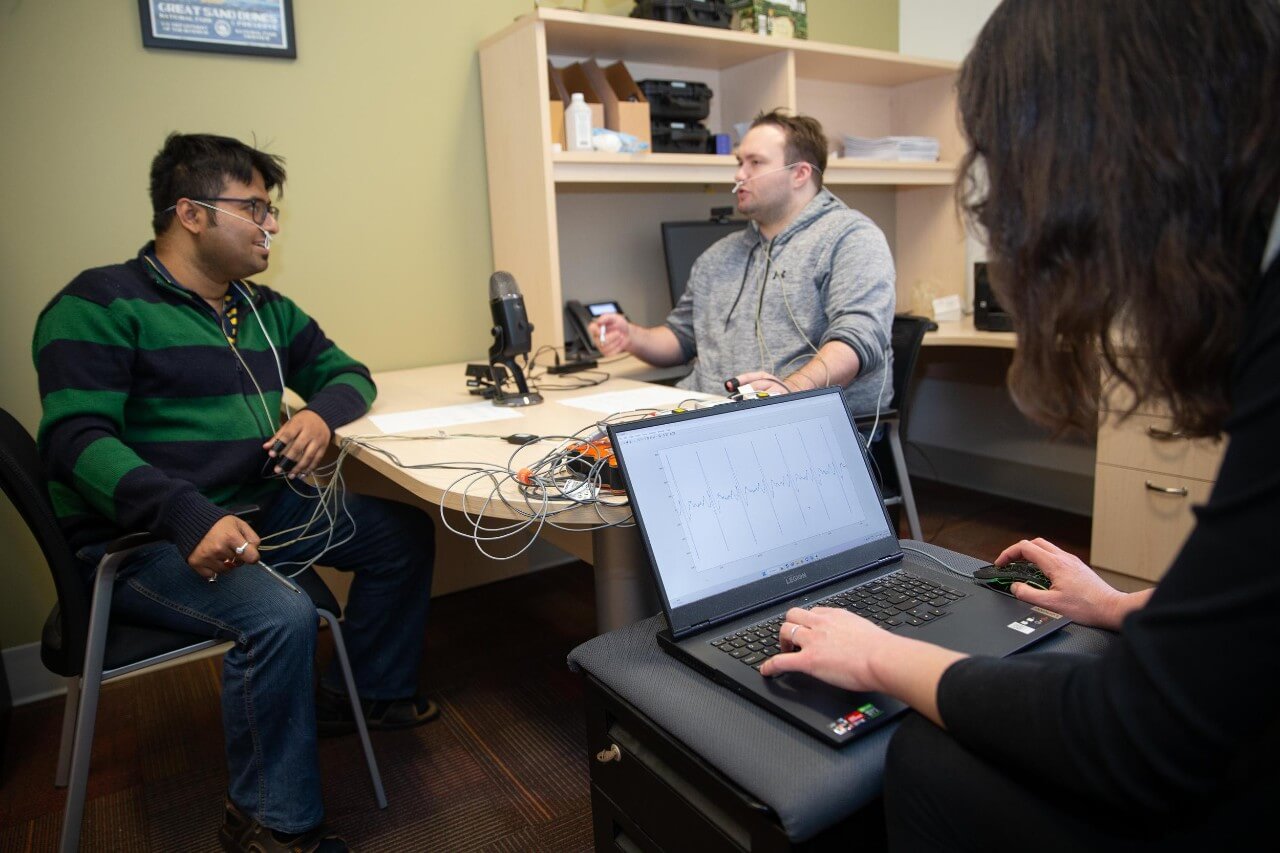‘The computer could tell if you’re a bore.’
CINCINNATI, Ohio — Instead of waiting three days for your date to call you back, a new app is capable of figuring out whether they think you’re the one or not. Researchers at the University of Cincinnati are developing an AI program that uses physiological data from wearable technology to estimate whether a date is going well. The computer could also provide real-time feedback for educators, therapists, or even autistic people on how they’re engaging with others.
The device is based on a phenomenon called physiological synchrony, where certain biological mechanisms sync up when talking with one another. The data from the wearable technology monitors a person’s physiological responses — respiration, heart rate, and perspiration. The effect is stronger when two people are engaged deeply in conversation or working closely together on a task. People don’t even have to talk to each other in person; conversations over Zoom are able to cause physiological synchrony.
In experiments with human participants, the Ai program could identify four types of conversation scenarios with 75 percent accuracy. It could also give some honest feedback on how you present yourself on a date.
“The computer could tell if you’re a bore,” says doctoral student and lead study author Iman Chatterjee in a university release. “A modified version of our system could measure the level of interest a person is taking in the conversation, how compatible the two of you are and how engaged the other person is in the conversation.”
What are the 4 kinds of conversations?
The study is one of the first to train artificial intelligence to recognize conversations using only physiological cues.
The four types of conversation are based on five physiological responses — chest and nose respiration, electrocardiogram, skin conductance, and peripheral skin temperature. By themselves, these measurements don’t say much about relationships. However, with multiple variables in place, the team was able to see patterns in the data.
Sixteen pairs talked about several topics they could strongly agree or disagree on before starting four different conversations. The first was a positive conversation where they happily discussed a shared opinion. The second was a negative conversation where they argued over a topic they disagreed on. The last two conversations were on an agreeable topic where each participant took a turn dominating the discussion. The AI picked up on three of the four types of conversations (one-sided, two-sided, positive, or negative) based on the bodily cues throughout the talks.
“Our next step is to see how much nuance we can separate,” says Vesna Novak, an associate professor of electrical engineering at the University of Cincinnati. “We’ve shown that AI has the ability to identify positive versus negative conversations, but can you separate shades of gray that humans wouldn’t discern?”

Physiological synchrony applies to more than just dating
Physiological synchrony is likely an evolutionary tool to help humans subconsciously bond and collaborate with others sharing similar interests.
“It is certainly no coincidence,” adds Chatterjee. “We only notice physiological synchrony when we measure it, but it probably creates a better level of coordination.”
Previous research on physiological synchrony shows it does a good job of predicting how well two people will work together to finish a task. The amount of synchrony also has an association with how much empathy a person perceives in a therapist or how engaged students feel with their teachers.
“You could probably use our system to determine which people in an organization work better together in a group and which are naturally antagonistic,” Chatterjee concludes.
The study is published in IEEE Transactions of Affective Computing.

